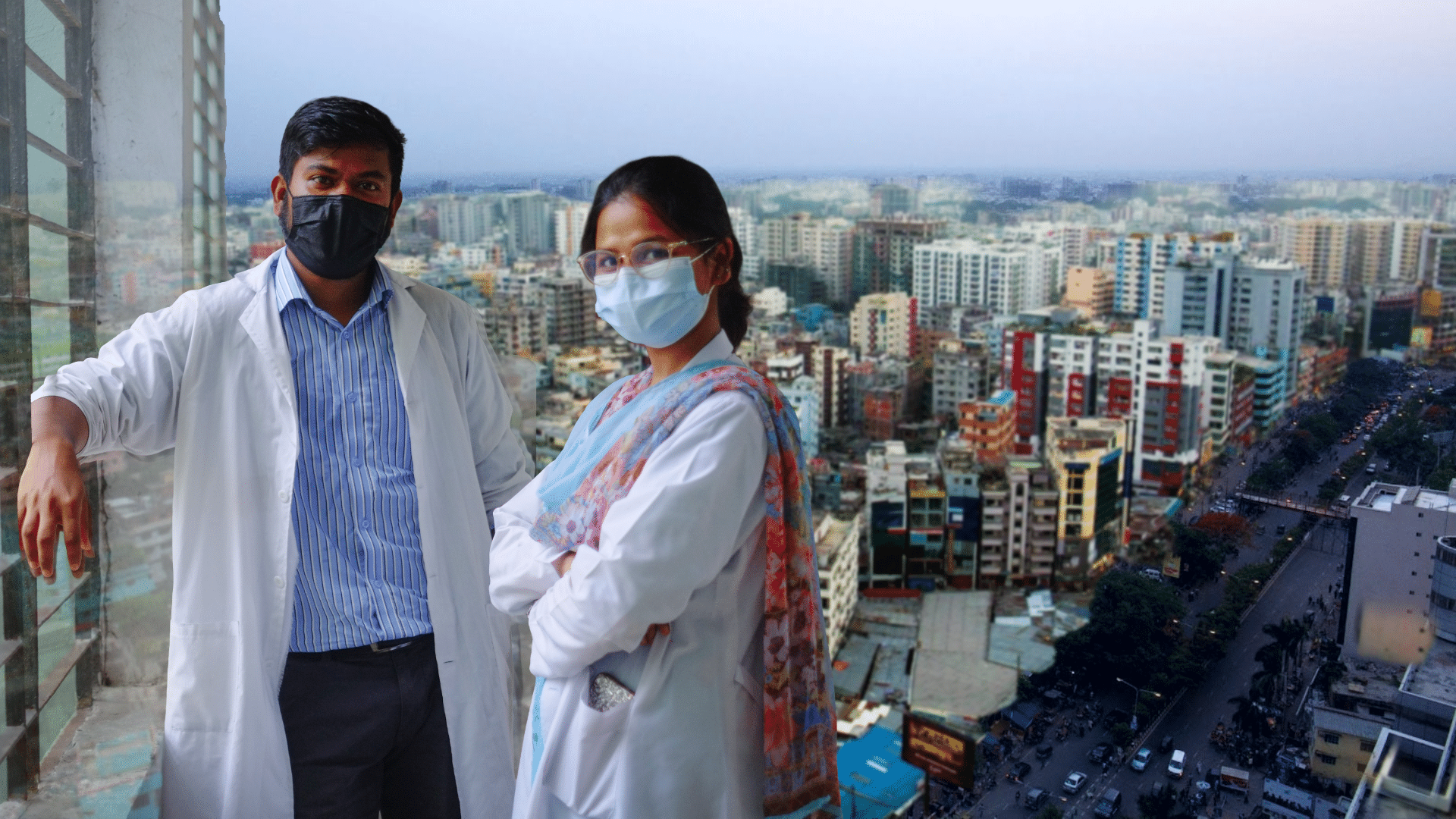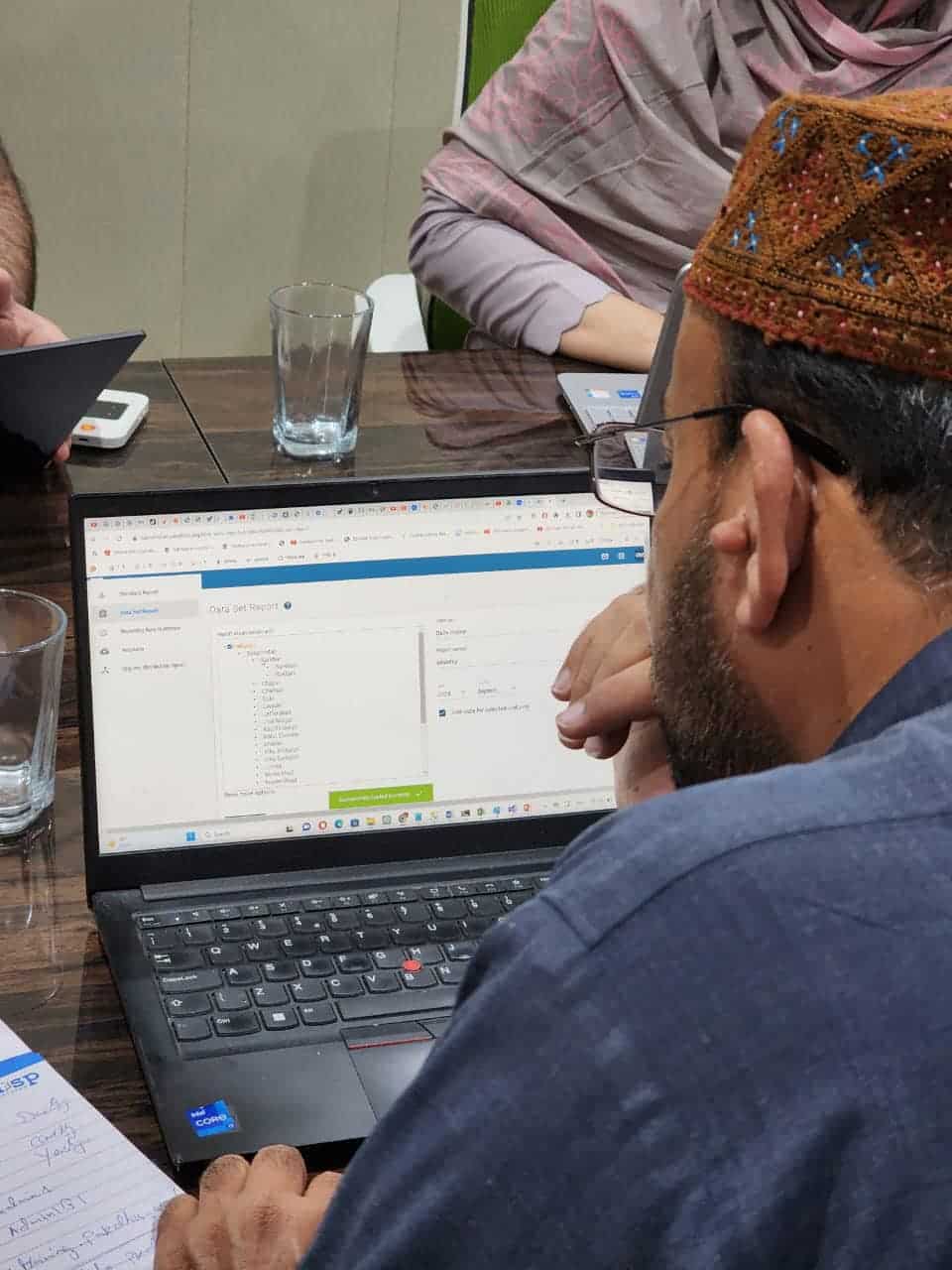
Building a successful public-private system for TB control in Pakistan with DHIS2
Pakistan’s National TB Control Program has used a DHIS2-based TB Tracker system to boost case detection, treatment success rates, and data management and reporting across the country, registering more than 200,000 cases electronically in the last year, and increasing case detection rates from 75% to up to 95%
Pakistan is the fifth most populous country in the world today, with a population of more than 251 million. The country also ranks fifth in the world for Tuberculosis (TB) cases, with approximately 650,000 new cases each year—including 15,000 drug-resistant cases—for 5.7% of global cases and more than 60% of total cases in the Eastern Mediterranean region, according to the U.S. Agency for International Development (USAID). TB is an infectious disease that most commonly affects the lungs, and is treatable with antibiotics given over a period of several months, in the vast majority of cases. There are many factors, however, that make TB particularly challenging to treat in low- and middle-income countries like Pakistan, including the cost of the medication itself, the travel required for ongoing follow-up appointments, the stigma associated with diagnosis, and the rise of drug-resistant cases.
One additional challenge for TB prevention and treatment in Pakistan, is the prevalence of private healthcare services. Because more than 70% of the population currently seeks care from private providers, authorities needed a public-private model to encourage coordination for TB case reporting, care, and follow-up across all providers, public and private. To digitize its national TB control program and address the challenges surrounding case tracking and intervention, Pakistan has implemented a large-scale DHIS2 Tracker system for case recording and reporting, with support from The Global Fund, the Gates Foundation, the World Health Organization, and other partners. The system has significantly enhanced TB care in Pakistan through improved data management and reporting processes, since it was rolled out across the nation in 2018. In fact, since the fourth quarter of 2023, health workers have recorded more than 212,000 cases in the TB Tracker module.
“The DHIS2 TB Tracker is transforming our engagement with the private sector in TB care. It provides valuable insights into how individuals with TB are accessing healthcare services across the country. With this data, we can strategically allocate resources where they are most needed, strengthening our monitoring and supervision efforts and ultimately leading to improved patient care.” Abdullah Latif, Senior Project Manager, Mercy Corps, Pakistan
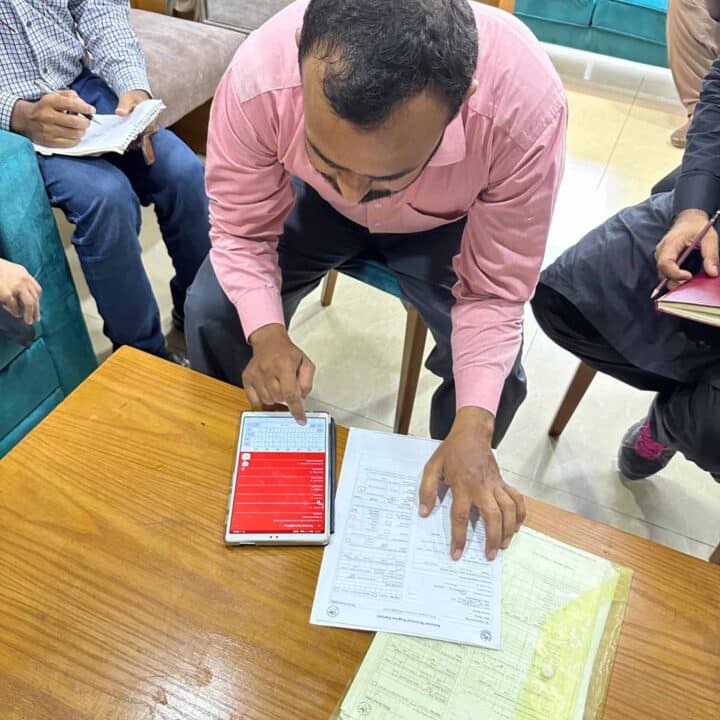
Creating better outcomes through improved data management and health worker capacity
Pakistan initially launched its DHIS2 aggregate TB system in 2018, and scaled up to a full national implementation in the same year. In 2022, the country began a pilot of the DHIS2 Tracker system for individual-level data, beginning in the district of Islamabad and then growing to national scale by 2023. Since achieving national scale implementation for both, with support from The Global Fund and the Gates Foundation, the National TB Control Program has continued to improve the system, linking it with other public health programs for enhanced health data integration, and adding new tools to support mobile reporting, for example. Throughout this effort, the nation has seen several key achievements in TB diagnosis and treatment, including streamlined data collection, more timely reporting, enhanced case management, and more comprehensive outbreak monitoring and response. In fact, the reporting rate for TB cases has increased as much as 20 percentage points, from an estimated 75% to more than 95% in many districts since 2018.
“Initially, health workers collected TB data on hard copies and prepared excel sheets, which had a high chance of containing incorrect data,” said Tanveer Ahmad, a project manager with HISP Pakistan. “However, with the implementation of DHIS2, data accuracy has greatly improved.” That data, in turn, can be accessed in real time by health workers across the country, which has also boosted case detection rates. Prior to this implementation, data analysis was possible only at the national, provincial and district levels, but DHIS2 has now enabled health workers and decision makers to analyze data all the way down to the facility level.
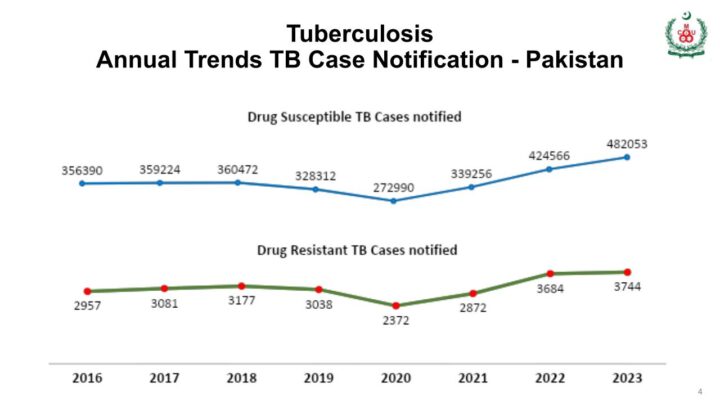
The DHIS2-based TB Tracker software also allows for better patient tracking, which has improved treatment adherence, with treatment success rates in some regions increasing from approximately 75% to more than 90% due to improved follow-up mechanisms. On a larger scale, the TB Control Program has been able to more effectively identify and respond to outbreaks because of DHIS2’s enhanced surveillance capabilities, contributing to a reported decrease in TB incidence in specific high-burden areas.
“DHIS2 has revolutionized TB (…) surveillance in Pakistan by enabling real-time data collection across all districts. It has improved case tracking and timely interventions for TB, while also playing a crucial role in malaria detection and response, particularly during the 2022 floods and the 2024 LLIN campaign, ensuring effective public health actions.” Fahad Hafeez, Manager MIS, Common Management Unit for AIDS, TB & Malaria, Ministry of National Health Services Regulation and Coordination
Introducing the PPM Hub to coordinate notifications and follow-up visits
In conjunction with ongoing efforts to digitize the nation’s TB control systems with DHIS2, Mercy Corps has led an effort to further streamline and coordinate private-sector patient notification, registration and follow-up with a PPM Hub it launched in 2022. The hub was first piloted in nine districts with 500 general practitioners (GPs), before a nationwide rollout in October 2023. It is currently in use in all of the 120 districts under the Mercy Corps private-sector implementation.
The hub is built around a call center that is used to coordinate real-time notification and follow-up of TB cases. When a GP in the private sector makes a TB diagnosis, the clinic uses the PPM Hub to initiate the notification and follow-up process. Call center agents receive the information, and enter it into DHIS2, which then triggers a notification to the district field supervisor (DFS) team, who will contact the clinic to complete the patient registration. Next, the DFS team will contact the patient and coordinate their follow-up visits for the remainder of their course of treatment. “You know, TB is a disease that takes almost six months to cure,” explained Azhar Ayub, a data visualization specialist and DHIS2 implementer with Mercy Corps in Pakistan. “The PPM Hub helps to facilitate the follow-ups—If a patient does not show up for a follow-up, then the PPM Hub will contact the DFS to go and (contact) the patient.”
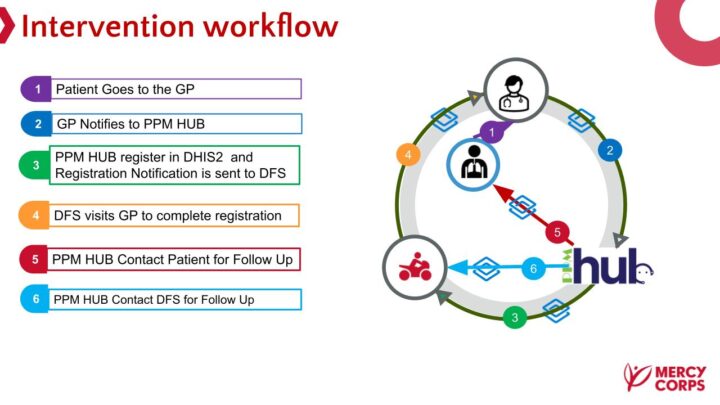
In addition to the PPM Hub, Mercy Corps also aims to integrate Pakistan’s DHIS2 instance with other related systems in late 2024, including the Rx Tracker for tracking TB cases from pharmacies, the Riders for Health specimen transportation system for sputum samples of presumptive TB cases, and the Active Case Finding system for data from mobile “chest camp” health facilities providing TB care in remote areas. The goal is to provide real-time data to support effective decision making at all levels, and the group is working with HISP Pakistan to achieve this added interoperability. For its next steps, Mercy Corps plans to improve its monitoring and surveillance system through real-time tracking and analysis.
Next steps for TB control digitization in Pakistan
Since its nationwide implementation in 2018, Pakistan’s DHIS2 system has led to significant improvements in TB care through better data management and enhanced capacity among health workers. These changes will continue to improve treatment outcomes, benefitting the patients themselves while also contributing to broader national public health goals in combating TB. Over the next two years in particular, the National TB Control Program hopes to address a few remaining implementation challenges. Key among them are the complete transition to paperless reporting, central organization unit management for the entire country, improved user management for public and private sector users, eliminating patient record duplication, coordinated data validation, further integration with existing systems, ongoing staff capacity building, and more.
“Staff turnover requires continuous capacity building for consistent reporting,” said Fahad Hafeez, a management information systems manager at the Common Management Unit for AIDS, TB and Malaria in Pakistan’s Ministry of National Health Services, Regulations and Coordination. “We have the system, we have the logistics, we have the human resources, but staff does have turnover, over time,” he said. “What do we do about that?” He said it is not realistic to rely on mass in-person training programs every year or two, because of budget constraints and logistics challenges for such a large community of users, but that the country should take full advantage of online learning opportunities. “You can focus on online tools, like the DHIS2 (Online Academy). You have courses, you have certificates, you can use those means to make sure that the staff is trained and up to date on the use of the system,” he said.
Additionally, Ayub said that Mercy Corps plans to develop a usage analytics dashboard, a field staff work plan within DHIS2, and multiple user interfaces. “We requested the HISP team to create a usage analytics dashboard to see how our field teams are using DHIS2, and which functions they are using most often,” he said. “Another very important thing is the field staff work plan in DHIS2 (…) the system will help to create their daily work plan, for example, when they have to go to the chest camp, when they have to go for registrations, how many patients they have to follow up.”
This impact story is based on presentations at the 2024 DHIS2 Annual Conference by Fahad Hafeez and Azhar Ayub.

